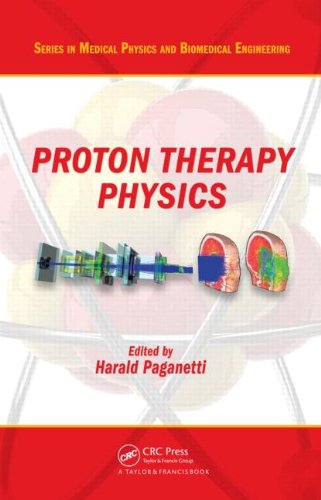Proton Therapy Physics 2011
دانلود کتاب پزشکی فیزیک پروتون درمانی
| نویسنده |
Harald Paganetti |
|---|
| تعداد صفحهها |
704 |
|---|---|
| نوع فایل |
|
| حجم |
36 Mb |
| سال انتشار |
2011 |
89,000 تومان
فیزیک پروتون درمانی فراتر از کتاب های موجود در مورد پروتون درمانی است تا یک نمای کلی عمیق از جنبه های فیزیکی این روش پرتودرمانی ارائه دهد و نیاز به جستجوی اطلاعات پراکنده در ادبیات فیزیک پزشکی را از بین ببرد.
این کتاب با ردیابی تاریخچه پروتون درمانی، پیشینه فیزیک اتمی و هسته ای را که برای درک برهمکنش های پروتون با بافت ها ضروری است، خلاصه می کند. فیزیک شتابدهندههای پروتون، پارامترهای پرتوهای پروتون بالینی، و مکانیسمهای تولید دوز منطبق را در بیمار شرح میدهد. سپس متن سیستمهای معرف و تکنیکهای اندازهگیری برای دزیمتری مرجع را پوشش میدهد، دستورالعملهای تضمین کیفیت اولیه و راهاندازی را تشریح میکند، و نمونههایی از شبیهسازیهای مونت کارلو در درمان پروتون را ارائه میدهد.
این کتاب به بحث در مورد برنامه ریزی درمان برای دوزهای استاندارد تک میدانی و چند میدانی، مفاهیم و الگوریتم های محاسبه دوز، و دقت و عدم قطعیت برای اهداف متحرک و متحرک ادامه می دهد. همچنین بهینهسازی طرح درمان رایانهای، روشهای اعتبارسنجی دوز یا محدوده پرتو در داخل بدن، ایمنی برای بیماران و پرسنل عملیاتی و اثرات بیولوژیکی استفاده از پروتونها را از دیدگاه فیزیکی بررسی میکند. فصل آخر استفاده از مدلهای خطر را برای عوارض شایع بافتی در بهینهسازی درمان نشان میدهد.
همراه با کاوش در مسائل تضمین کیفیت و ملاحظات بیولوژیکی، این راهنمای عملی آخرین مطالعات بالینی در مورد استفاده از پروتون ها در برنامه ریزی درمان و نظارت بر تشعشع را گرد هم می آورد. این کتاب که هم برای تازه واردان در فیزیک پزشکی و هم برای انکولوژیست های باتجربه اشعه مناسب است، به خوانندگان کمک می کند تا عدم قطعیت ها و محدودیت های توزیع دقیق دوز طراحی شده را درک کنند.
Proton Therapy Physics goes beyond current books on proton therapy to provide an in-depth overview of the physics aspects of this radiation therapy modality, eliminating the need to dig through information scattered in the medical physics literature.
After tracing the history of proton therapy, the book summarizes the atomic and nuclear physics background necessary for understanding proton interactions with tissue. It describes the physics of proton accelerators, the parameters of clinical proton beams, and the mechanisms to generate a conformal dose distribution in a patient. The text then covers detector systems and measuring techniques for reference dosimetry, outlines basic quality assurance and commissioning guidelines, and gives examples of Monte Carlo simulations in proton therapy.
The book moves on to discussions of treatment planning for single- and multiple-field uniform doses, dose calculation concepts and algorithms, and precision and uncertainties for nonmoving and moving targets. It also examines computerized treatment plan optimization, methods for in vivo dose or beam range verification, the safety of patients and operating personnel, and the biological implications of using protons from a physics perspective. The final chapter illustrates the use of risk models for common tissue complications in treatment optimization.
Along with exploring quality assurance issues and biological considerations, this practical guide collects the latest clinical studies on the use of protons in treatment planning and radiation monitoring. Suitable for both newcomers in medical physics and more seasoned specialists in radiation oncology, the book helps readers understand the uncertainties and limitations of precisely shaped dose distribution.




